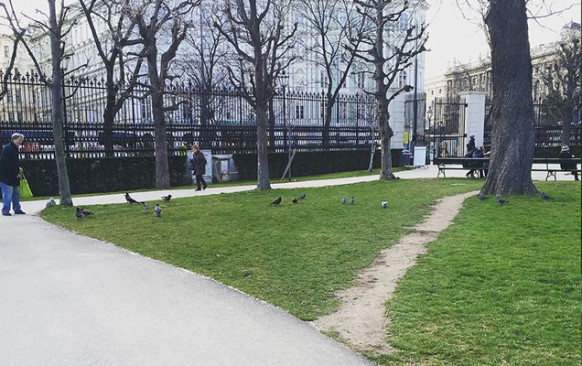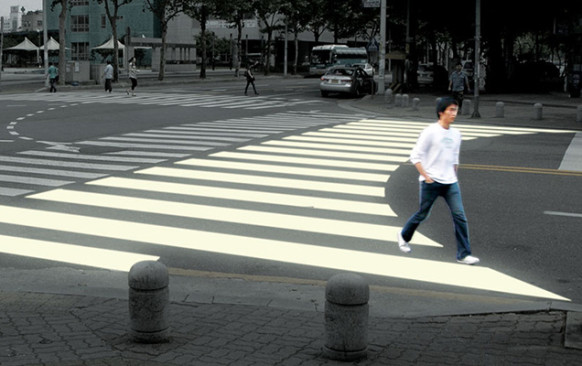
Two paths diverged in a park, one paved with cement, the other a trail of worn grass. Which is the one more travelled by? And why?
The poet Robert Frost might ponder the metaphorical paths we take to reach greater self awareness, but in the world of environmental design and wayfinding, understanding and/or predicting the route of pedestrians is key to designing a system that gets them quickly from A to B.
‘Desire lines’ are those casually worn trails that veer off a constructed path. They might seem to be random and unplanned, but their existence reveals a fundamental flaw in the thought and planning of that space. Regardless of how well executed a path is, people will naturally choose the most expedient route to get to their destination.
Take for example the ‘Ergo Walkway’ – a competition entry by Korean designer Jae Min Lim.

The ‘Ergo Walkway’ by Korean designer Jae Min Lim
Lim observed people at a specific crossing, and noted that they were more inclined to take the fastest shortcut, whether intentionally or as an unconscious act. His design solution was an ergonomic, curved crossing, designed to reflect the desired route of the pedestrians he had observed. The functionality of Lim’s design doesn’t just provide a shorter and easier walking route, it also improves pedestrian safety by discouraging jaywalking.
Allowing desire lines to emerge naturally, and then formalising permanent paths retrospectively was a method used by architect Rem Koolhaas in 1997. For two days he used a team of students to track movement across the McCormick Tribune Campus Centre at the Illinois Institute of Technology. Their observation documented a web of heavily traveled and irregular paths.

McCormick Tribune Campus Centre Circulation Paths, 1997
These circulation paths became the foundation for the development of the campus hallways, with widths designed proportionally to the volume of students recorded during observation. The walkways in turn determined the location and dimensions of buildings within the space, dividing the university into a series of islands. The result is a thoughtfully designed campus that prioritises the user journey needs.

McCormick Tribune Campus Centre Interior
Desire lines might look like a blight on a beautifully executed space, but those rebellious trails teach us a valuable lesson in understanding user needs. To successfully design a wayfinding system, we must thoroughly understand the behaviour and needs of the people using that space.